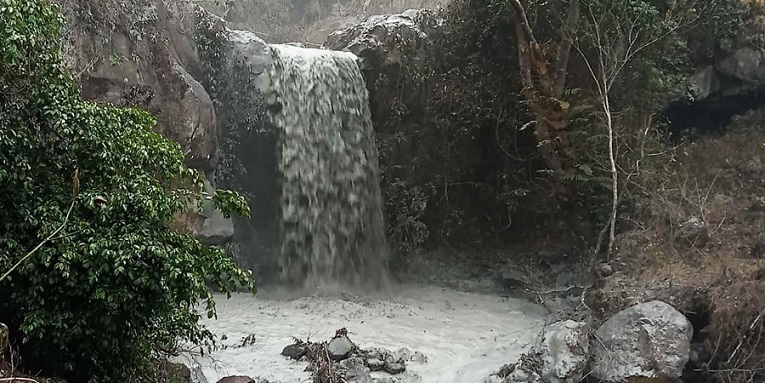Bacolod City – It is business as usual for sugar farmers who are continuing to replant their El Niño damaged sugarcane areas, following phreatic explosion of Kanlaon volcano on Monday night, according to the Sugar Regulatory Administration.
In a statement, SRA disclosed that the rain is helping to neutralize the acidity of the volcanic ash, which it said indicates that the phreatic explosion resulted in minimal damage to sugarcane fields.
Rivers and creeks already have lahar flow but so far no crop damage, it added.
The soil and leaf samples taken in 23 farm locations around Kanlaon on June 5 and 6 showed an improvement of Ph from 5.0 to about 5.8 to 5.9 on June 6. Leaf ash Ph improved from 4.14 to 4.7Ph on average.
SRA head Pablo Luis Azcona also approved the utilization of P2.5 million assistance to farmers and their employees affected by the eruption of Kanlaon volcano, the statement added.
Meanwhile, Heavy rains hitting Kanlaon volcano over-the-wekend washed volcanic mudand debris through waterways again in La Castellana and Carlota City in Negros Occidental.
Images posted on social media showed torrents of gray mud and debris, or lahar, roaring down from Guintubdan falls in La Carlota City and Baji Baji waterfalls in Barangay. Cabacungan, La Castellana.
This follows the order of Mayor Alme Rhummyla Nicor Mangilimutan for a preemptive evacuation on Thursday night in the barangays of Biak Na Bato, Mansalanao, Upper Masulog, Cabagnaan, and Sag-ang in La Castellana, which have waterways from the Kanlaon volcano.
The 850 families, composed of 3,255 individuals, from the five barangays are now staying in different evacuation centers in La Castellana, according to reports from the town local disaster council.
However, help from other local government units in Negros Occidental, including from 5th district Rep. Emilio Bernardino Yulo, and other government agencies, in terms of food packages and potable water, kept on arriving yesterday in La Castellana.
The lahar on June 5 overflowed to the highway of Brgy Biak Na Bato in La Castellana.
Mt. Kanlaon continues to emit steam and sulfur dioxide (SO2), as the volcano is still degassing four days after it erupted, an official of the Philippine Institute of Volcanology and Seismology (Phivolcs) said recently.
Andylene Quintia, Phivolcs resident volcanologist based in La Carlota, Negros Occidental, told the Philippine News Agency in an interview that the steam plume observed by residents in Canlaon City, Negros Oriental, and other nearby areas, was typical of a volcano that has just erupted.
“We have observed a continuing degassing of the volcano since the eruption and the white plume of smoke, steam, and sulfur dioxide may be enhanced by rain,” she said.
Degassing is a process of releasing pressure from the magma inside the volcano.
Phivolcs said 14 volcanic earthquakes were logged from midnight June 6 to midnight June 7, with voluminous emissions as high as 2,000 meters, drifting towards northeast and southwest directions. (Gilbert Bayoran via The Visayan Daily Star with reports from Philippine News Agency)

